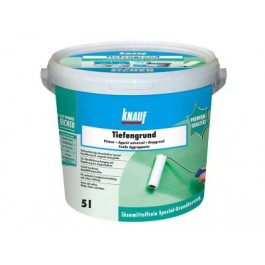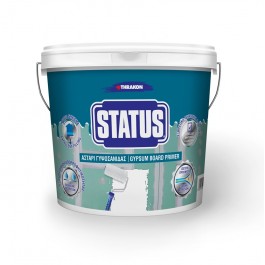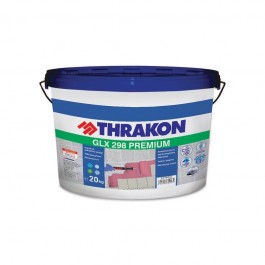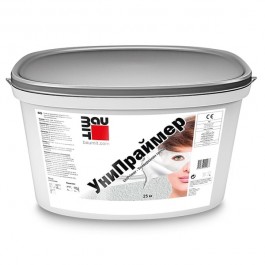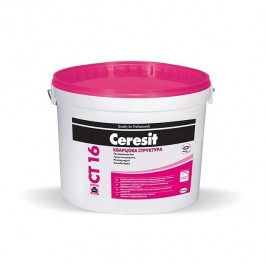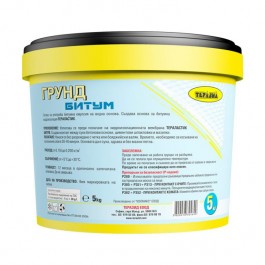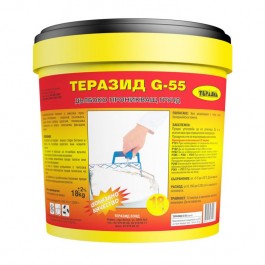Primers
It is advisable to use a primer on almost any type of surface that is to be painted. Whether it's new drywall, old wood, clean metal, previously painted walls, brick, tiles, or something else, a primer is essential.
In essence, primer is a sticky liquid material specifically designed to adhere tightly to the surface, create an ideal stable base for the subsequent layer of paint, sealer, or other material, and promote its adhesion.
If you start painting, sealing, or tiling before applying the primer, you will have to apply several layers of paint or sealant. However, this way you risk not achieving good coverage and adhesion between the individual components.
That's why we recommend not skipping this important step in preparing your construction project. In the following lines, we have prepared valuable information that we hope will help you make the right choice of primer and successfully apply it.
Advantages of Using Primer
Wall primer is chemically designed to adhere to the surface and enhance the adhesive properties of the upper layer of the material by improving the bond between the individual elements. Therefore, it is crucial to apply a suitable primer for concrete, plaster, paint, or the bathroom to facilitate the easy application of the final material.
However, before we delve into specific situations where it is applied and explore the types of primers, it is essential to pay attention to their advantages. Contrary to the notion that the primer is often just an undercoat, it is, in fact, much more. The benefits of applying a priming coat include:
- Primer for drywall helps seal pores in untreated surfaces and also helps hide joints or seams on new drywall. Besides drywall surfaces, it can be used on wooden bases. It prevents seepage from knots and other natural defects and coloration in the wood material.
- Wall and ceiling primer perfectly covers all defects, such as areas of the walls or ceilings that have been patched or repaired.
- Sealing primer ensures achieving a surface where paint, sealant, and putty adhere efficiently.
- Deep-penetrating primer by Baumit is the ideal solution for blocking stains, odors, discolorations, and mold traces.
- In general, primer is usually available in white, but it is also available in other neutral shades. This is done to achieve a maximally neutral base for optimal adherence of paint, putty, and sealant layers. A neutral primer also enhances the original pigments of the final layer. However, colored varieties are also available on the market, with specific pigments added to intensify the color of the final surface. This option is suitable if you want to achieve a much lighter shade on the surface compared to the original color.
- Wall and ceiling primer is available at an affordable price, while at the same time, it optimizes a significant number of expenses. The primer is cheaper than paint, mineral putty, and gypsum putty, so it helps you cover the surface and take care of issues using less expensive material.
Types of Primers
After understanding the individual advantages of this construction material, it's time to explore the different types of primers.
Oil-Based Primers
The first type of primer available in the market is oil-based. We recommend using this type on surfaces that undergo frequent contact, such as doors, windows, and cabinets. All oil-based primers require the use of mineral spirits for cleaning.
The deep-penetrating oil-based primer has excellent sealing properties for problematic surfaces like wood and OSB panels. Shellac-based primer mixes are designed to handle even the most challenging surfaces with ease.
Water-Based Primers
The next types of primers are water-based or latex primers. They are perfect for preventing the appearance of stains. This material is the right product to use as a sealing primer for concrete, providing excellent coverage with tremendous flexibility and maximum resistance to cracking, so it is suitable for use on drywall in bathrooms and other areas.
Many water-based primers can be used for filling, mineral putty, masonry, tiling over tile, brick, painted metals, depending on the specific formula. In general, higher-quality water-based primers like those from Baumit, Ceresit, and Knauf use 100% acrylic resins.
Paint and Primer in One
The primer product that can be used for priming and painting is designed to seal and cover surfaces simultaneously. This type is most effective on drywall, gypsum putty, or previously painted walls and ceilings. The 2-in-1 formula can provide a homogeneous, dense cover with the application of only one layer. However, this product is created more as paint than as a primer.
This means that the primer may not achieve as good results as other types of primers in individual scenarios. For surfaces where a high-performance bond, stain blocking, or sealing is required, such as concrete, it is not recommended to use a paint and primer product.
Application
Without a doubt, not all types of primers are made with one formula and one purpose. To achieve the best possible end result when applying paint, mineral putty, gypsum putty, cement mortar, or tiling over tile, you should rely on the right product for the job.
Choosing the Primer
Start by considering where you will apply the primer - outdoors or indoors. Accordingly, in the first case, you should opt for exterior primers for surfaces like walls, while in the second case, choose interior primers. Then, pay attention to the type of material you will treat - drywall, concrete, OSB panels, wood, or something else.
With the right choice, you will help the paint or putty achieve even coverage. With its help, you will block tannin, water, grease, and smoke stains from seeping through the topcoat. Lastly, you will improve the level of adhesion of the topcoat, allowing your paint to last longer and look better.
Protecting the Room
As with all renovation activities, this primer project will require you to protect the other elements and furniture in the room. Start by moving the furniture and appliances to another room or at least away from the walls and ceiling you will be working on. Then, cover them with thick cloths, tarps, or plastic sheets.
Next, focus on the floor, which also needs protection. Before you start applying wall primer, clean the dust and any dirt from the workspace. Any contaminants left on the wall can cause improper adhesion of paint to the primer.
Inspect the integrity of the wall, and if you see cracks and irregularities, repair them with putty. Allow it to dry, then sand the surface lightly. Finally, wash the walls with a damp cloth and clean soapy water, wipe with a lint-free cloth, and remove any residues. Use painter's tape to mask the area where you will apply the primer.
Applying the Primer
Before you start applying the sealing primer, shake the packaging beforehand. This way, you will activate the substances in it and avoid chemical separation. Pour a small amount into a paint tray. Spread the wall primer evenly with a brush or roller, filling even the most hard-to-reach corners.
To make it easier to apply, outline the area around the painter's tape with the brush and use the roller to cover the larger area. Repeat as necessary to achieve the desired coverage level.
It is of utmost importance to apply wall and ceiling primer only on completely dry and clean surfaces. The action of high-quality deep-penetrating primer will be enhanced if the surface is pre-treated with sandpaper and excess dust is carefully removed with a damp cloth before applying the primer.
After applying the bonding primer, it is necessary to clean again. This will provide optimal conditions for applying the finishing layer. Keep in mind that all types of primers contain chemicals in their composition, so you need to ensure proper ventilation and air exchange to remove harmful fumes. We also recommend wearing a mask during priming.
Atek 1 Wall Primer
All surfaces must be treated with primer before painting, including drywall for bathrooms, concrete, wood, and metal. Thanks to its characteristics, the material will ensure a perfectly smooth surface and an excellent base for applying mineral putty, cement mortar, putty, tiles, gypsum putty, or paint.
With a wide range of affordable primers in our online store from brands like Baumit, Ceresit, and Knauf, you can turn any construction project into a successful venture with an attractive design. Contact us to help you choose a wall and ceiling primer.



